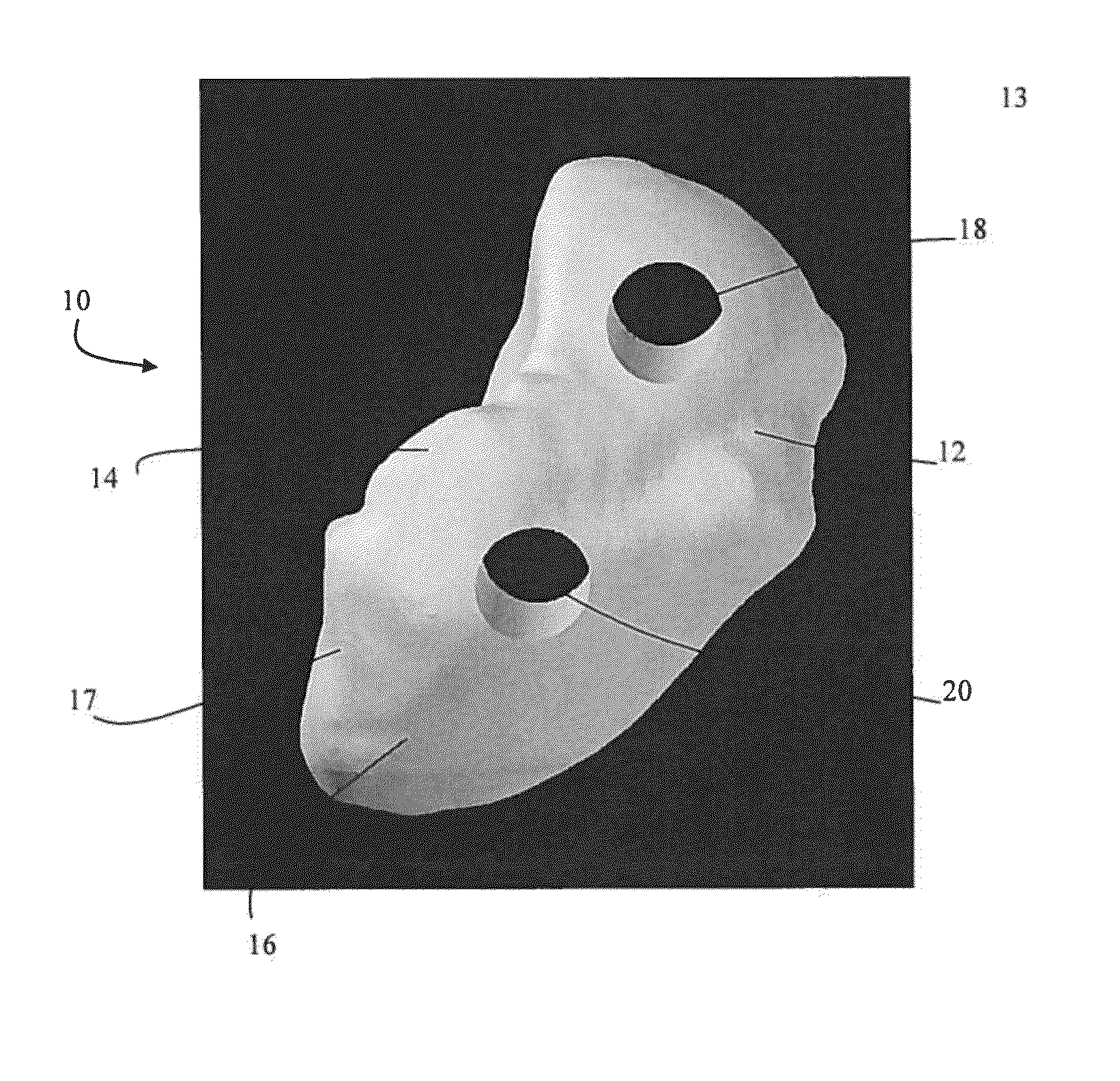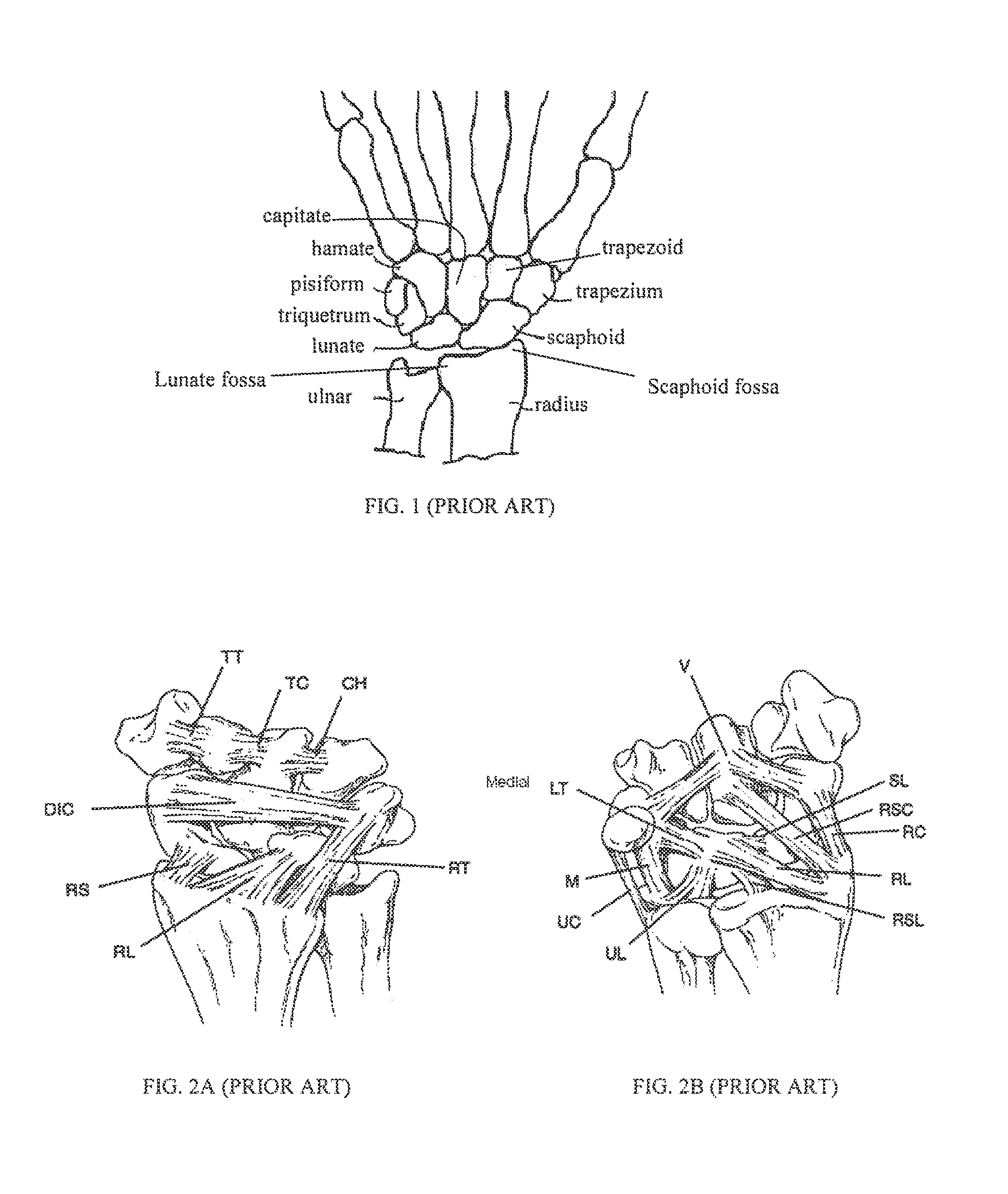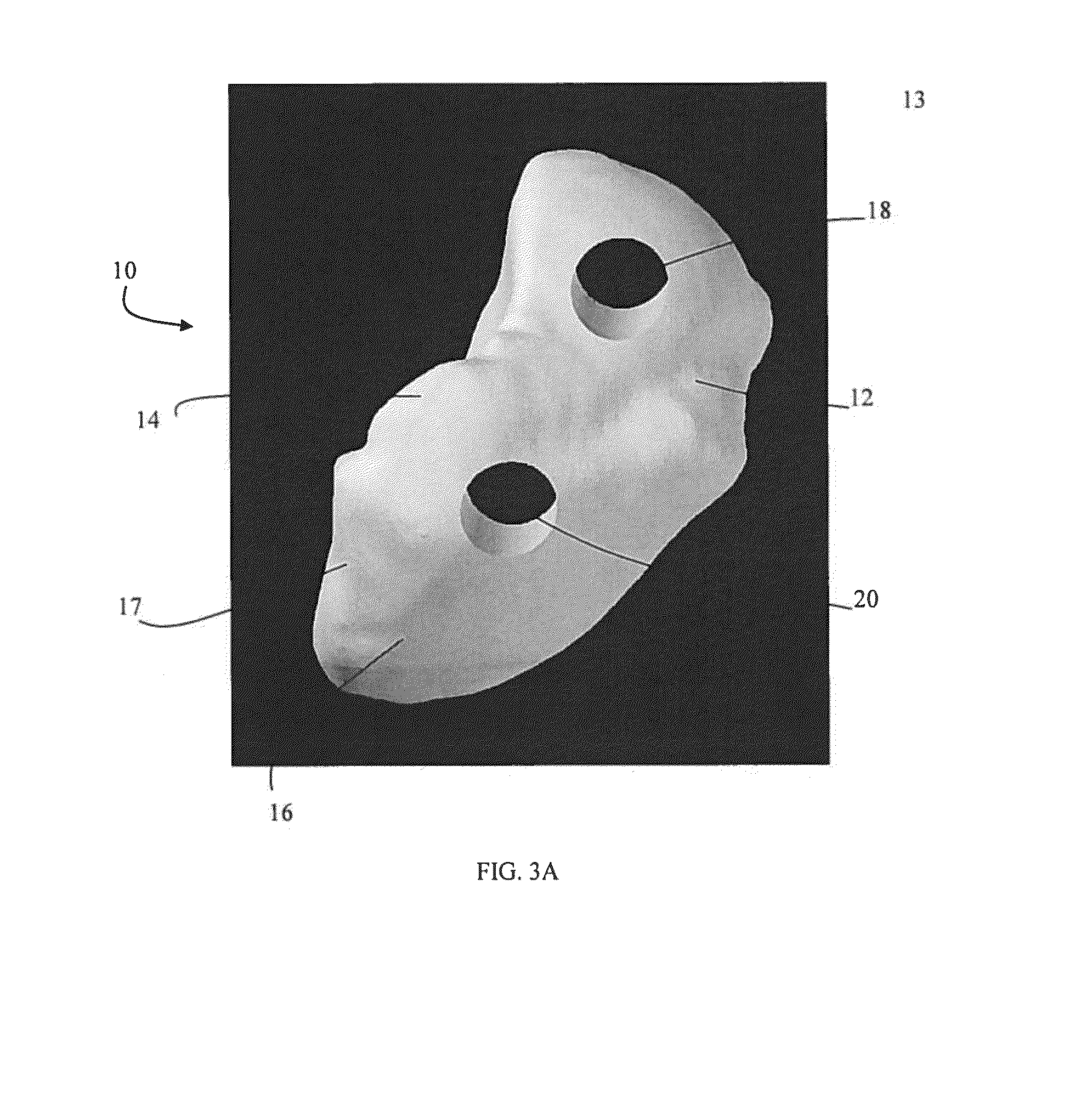Orthopaedic implants
a technology of orthopaedic implants and implants, applied in the field of orthopaedic implants, can solve the problems of limited success in wrist replacement of bones and joints, decreased joint mobility, damaged or diseased bones and joints, etc., and achieve the effect of reducing difficulties and disadvantages
- Summary
- Abstract
- Description
- Claims
- Application Information
AI Technical Summary
Benefits of technology
Problems solved by technology
Method used
Image
Examples
example 1
[0111]The scaphoid implant 10 of the present invention was made and implanted in the manner as described above into the wrist of a cadaver, including use of the cutting guide jigs.
[0112]FIGS. 26A and 26B, 27A and 27B, and 28A and 28B show x-rays taken of the cadaver's wrist after implantation and during maximum flexion and extension.
example 2
[0113]The inventors performed a cadaveric study using MRI and CT on the symmetry of contralateral scaphoid bones. Surprisingly, they found that the contralateral scaphoid bones are mirror images of one another, as determined by four geometrical features: 1) long axis, 2) waist length, 3) distal pole and 4) proximal pole (FIG. 29A).
[0114]A CT and MR investigation of 12 pairs of cadaveric wrists was made in neutral position. After imaging, each wrist was dissected and the bones were cleaned of any connective tissue. The bones were measured along their longest axis and the volume of each bone was determined by water displacement measurements.
[0115]Lunate Measurements[0116]Antero-dorsal diameter (16.96 mm±1.6)[0117]Medio-lateral diameter (12.8 mm±1.37)[0118]Height / max length[0119]Volume[0120]Surface Area.
[0121]Scaphoid Measurements[0122]Height / Max length[0123]Volume[0124]Surface Area.
[0125]A statistical analysis was carried using the Pearson correlation coefficient comparing CT / MRI and ...
PUM
| Property | Measurement | Unit |
|---|---|---|
| diameter | aaaaa | aaaaa |
| diameter | aaaaa | aaaaa |
| Magnetic Resonance Imaging | aaaaa | aaaaa |
Abstract
Description
Claims
Application Information
 Login to View More
Login to View More - R&D
- Intellectual Property
- Life Sciences
- Materials
- Tech Scout
- Unparalleled Data Quality
- Higher Quality Content
- 60% Fewer Hallucinations
Browse by: Latest US Patents, China's latest patents, Technical Efficacy Thesaurus, Application Domain, Technology Topic, Popular Technical Reports.
© 2025 PatSnap. All rights reserved.Legal|Privacy policy|Modern Slavery Act Transparency Statement|Sitemap|About US| Contact US: help@patsnap.com



